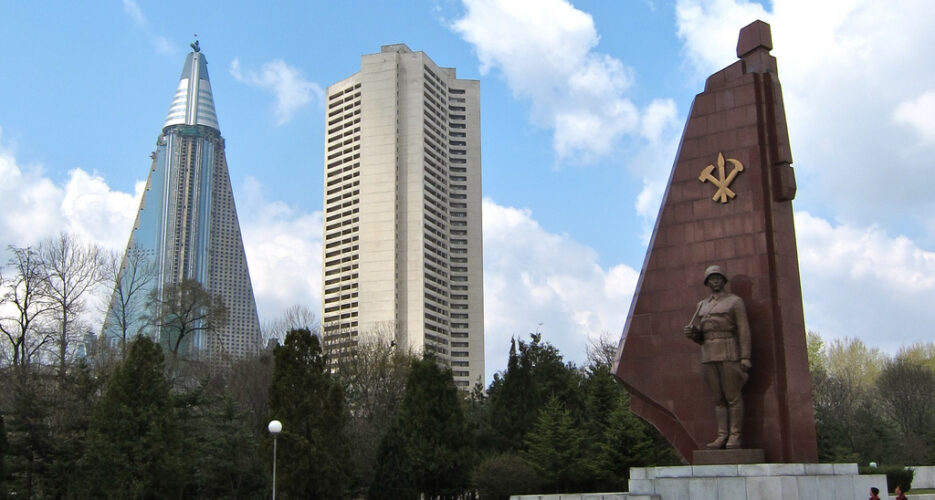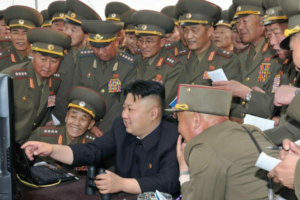The construction of modern patterns found in Pyongyang is, in many ways, the story of Kim Il Sung, the first leader of the Democratic People's Republic of Korea. Before rising to prominence in North Korea following the Japanese surrender in World War II, Kim led a small unit of anti-Japanese guerrillas and cultivated relationships with key Soviet officials in Russia. Kim's cult of personality mirrored that of Joseph Stalin and was replicated on a grand scale by his son and grandson in the ongoing development of Pyongyang's space.
Through its initial years, the DPRK maintained a close relationship with Moscow and her client states; the earliest plans for Pyongyang envisioned a Soviet-style capital city. Later, an increasing emphasis on Kim Il Sung and the concept of Juche became evident in Pyongyang's public spaces, with the tower of Juche, commissioned by Kim Jong Il, rising across the Taedong River from Kim Il Sung Square in 1982. This shift accompanied dramatic political changes in the Communist Bloc as well as North Korean ideology in the three decades between Pyongyang's reconstruction after the Korean War and Kim Jong Il's rise to prominence.
The construction of modern patterns found in Pyongyang is, in many ways, the story of Kim Il Sung, the first leader of the Democratic People's Republic of Korea. Before rising to prominence in North Korea following the Japanese surrender in World War II, Kim led a small unit of anti-Japanese guerrillas and cultivated relationships with key Soviet officials in Russia. Kim's cult of personality mirrored that of Joseph Stalin and was replicated on a grand scale by his son and grandson in the ongoing development of Pyongyang's space.
Through its initial years, the DPRK maintained a close relationship with Moscow and her client states; the earliest plans for Pyongyang envisioned a Soviet-style capital city. Later, an increasing emphasis on Kim Il Sung and the concept of Juche became evident in Pyongyang's public spaces, with the tower of Juche, commissioned by Kim Jong Il, rising across the Taedong River from Kim Il Sung Square in 1982. This shift accompanied dramatic political changes in the Communist Bloc as well as North Korean ideology in the three decades between Pyongyang's reconstruction after the Korean War and Kim Jong Il's rise to prominence.
Try unlimited access
Only $1 for four weeks
-
Unlimited access to all of NK News: reporting, investigations, analysis
-
Year-one discount if you continue past $1 trial period
-
The NK News Daily Update, an email newsletter to keep you in the loop
-
Searchable archive of all content, photo galleries, special columns
-
Contact NK News reporters with tips or requests for reporting
Get unlimited access to all NK News content, including original reporting, investigations, and analyses by our team of DPRK experts.
Subscribe
now
All major cards accepted. No commitments – you can cancel any time.










